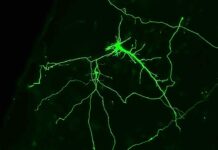The influence of horses on Native American tribes on the Great Plains was tremendous, leading to large-scale bison hunting and long-distance raiding. Historians had believed that horses were only widely adopted by Native peoples in the 18th century, when European travelers first recorded their presence on the Plains. However, a new study published in Science provides evidence that horses had made it as far north as the Plains up to a century earlier than previously thought.
The Background of Horse Integration
The Americas were horseless for centuries, even though horses had evolved there more than 4 million years ago, spreading to Eurasia and Africa. The ancestors of Native Americans would have encountered herds of wild horses when they entered North America more than 14,000 years ago. From archaeological evidence, it seems early Americans hunted horses and used their bones as tools, but they did not domesticate or ride them. North America’s horses were wiped out by hunting or climate change around 5000 years ago.
The horse entered the Americas again in 1519 when Spanish conquistador Hernán Cortés made landfall on the Gulf Coast of Mexico with 16 horses. The horse became a status symbol, means of transport, and hunting companion rather than prey, setting off massive human migrations as some Native groups shifted to more mobile lifestyles. It also unleashed struggles over resources on the Plains and elsewhere.
The Surprising Findings of the New Study
The new study is based on archaeological evidence, radiocarbon dating, isotope analysis, and ancient DNA. It shows that horses had begun to spread within a few decades after the Spanish introduced them to the Southwest in the 16th century. The study shifts the timeline earlier by showing that people beyond the Spanish frontier were breeding, feeding, herding, and caring for horses – and probably riding them – beginning sometime after 1550. They had thoroughly incorporated horses into their societies by 1650 at the latest.
A Historical Perspective on Horse Integration
Historians have tended to compress the adoption of the horse by tribes throughout the Great Plains and Rocky Mountains into a pivotal half-century, beginning in 1680 with a bloody revolt against Spanish rule by Pueblo people in New Mexico and ending with the first European accounts of horses on the northern Plains. However, some Native accounts contradict this timeline and suggest that some tribes had acquired horses much earlier. Until recently, archaeologists had also taken this compressed historical timeline for granted.
Uncovering the Complexities of Horse Integration
A new study is shedding light on how horses spread across North America and were integrated into Native American culture. The research team, led by University of Colorado anthropologist Andrew Duffield Taylor, used a combination of radiocarbon dating, DNA analysis, and other methods to study horse bones found in archaeological sites across the Great Plains. The study challenges previous assumptions about the role of horses in Native American culture and offers a new perspective on the complex trade networks and political alliances that existed among tribes in the region.
A New Timeline for Cultural Change
The study challenges the assumption that the handfuls of horse bones found at Paa’ko, a village near Albuquerque, were remains of Spanish friar’s mounts eaten by the Native residents during the Spanish occupation. Radiocarbon dating showed that these bones were at least 400 years old and probably predated the first Spanish settlement in New Mexico in 1598. This new timing suggests that Paa’ko might have been an early transit point where Native people moved horses from Spanish-controlled areas east to the Plains, indicating a wide range of cultural change happening outside of European view.
Exploring Early Native American Caretakers
At a site in southwestern Wyoming called Blacks Fork, a young foal was buried with three coyote skulls, suggesting it may have been part of a religious ceremony. Radiocarbon dating showed that the Blacks Fork horse was raised, tethered, and buried between 1600 and 1650, hundreds of kilometers north of Paa’ko and Spanish outposts in New Mexico. Some researchers in the 1990s speculated that the Blacks Fork horse might have been brought to the region by an unrecorded Spanish expedition. However, the new radiocarbon date challenges this theory and suggests that early Native Americans might have been able to handle horses in this way.
Native American Perspectives on Horse Integration
The study also shows how Native American perspectives and laboratory science can enhance and challenge each other. Ethnohistorian Yvette Running Horse Collin of the Oglala Lakota Nation, who argued that horses never went extinct in the Americas at all, collaborated with University of Toulouse geneticist Ludovic Orlando on a genetic investigation into the origins of Native horses that became part of the Science paper. The researchers found that horses on the Great Plains in the historic period were closely related to horses in Spain at the same time. The study acknowledges that some interpretive gaps among the authors remained unbridged, and it includes a statement from Lakota elders, several of whom are co-authors.
In conclusion, the new study published in Science provides fascinating insights into how horses were integrated into Native American culture, and the complexities of their adoption and use on the Great Plains. The study challenges previous assumptions and offers a new perspective on the cultural and political networks that existed among tribes in the region. Through collaboration between Native American perspectives and laboratory science, the study also highlights the importance of diverse perspectives and approaches in advancing our understanding of history and culture.
Google News | Telegram
















